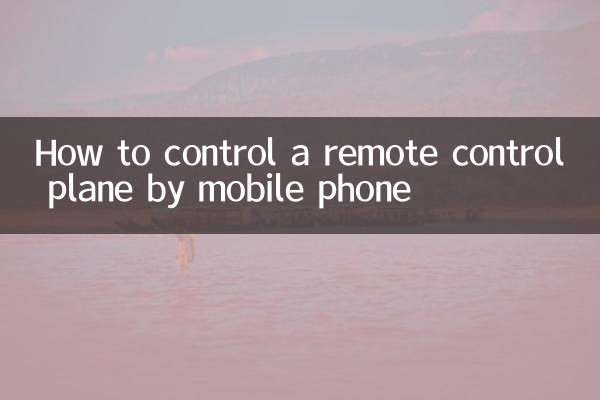How to control remote-controlled aircraft on mobile phones: Analysis of popular technologies on the entire network in the past 10 days
With the popularity of smart devices, mobile phone control of remote-controlled aircraft has become a hot topic among technology enthusiasts. This article will combine the hot topics on the entire network in the past 10 days, from technical principles, operating steps to precautions, to provide you with structured analysis.
1. Technical principles and core components

Mobile phone control remote-controlled aircraft mainly relies on Bluetooth/Wi-Fi modules, dedicated APPs and flight control systems. Here is a comparison of key components:
| Components | Function | Common models |
|---|---|---|
| Bluetooth module | Short-distance wireless communication (≤100 meters) | HC-05, HM-10 |
| Wi-Fi module | Long-distance control (requires router or direct connection) | ESP8266, ESP32 |
| Flight control system | Stable flight and command processing | Arduino, Raspberry Pi |
2. Detailed explanation of the operation steps
1.Hardware preparation: The remote-controlled aircraft must be modified to a mobile phone-controlled version, and a Bluetooth/Wi-Fi receiver must be installed.
2.Software installation: Download a dedicated APP (such asDJI GO,KKRC), some open source flight controls require custom programming.
3.Connection pairing: Turn on the phone Bluetooth/Wi-Fi, search for the device and complete the binding.
4.Calibration test: Calibrate the gyroscope and control sensitivity in the APP to ensure flight stability.
3. Recent popular models and adaptation solutions
According to the sales volume of e-commerce platforms and the heat of forum discussion, the following models are the most popular:
| model | Control method | Price range |
|---|---|---|
| DJI Mini 2 SE | Wi-Fi Direct Connection (Official APP) | 2000-3000 yuan |
| Holy Stone HS720 | Bluetooth + GPS positioning | 1500-2000 yuan |
| DIY F450 quad-axis | Need to configure ESP32 modules | 500-1000 yuan |
4. Safety and regulations precautions
1.Flight area: Avoid airports, military restricted areas and other no-fly areas, and some cities require real-name registration.
2.Signal interference: Avoid operating on high-voltage lines or crowded places to prevent loss of control.
3.Privacy protection: No photographs of others or sensitive places without permission.
5. Future trends: The combination of AI and mobile phone control
In the past 10 days, technology media has hotly discussed functions such as AI gesture control and automatic obstacle avoidance. It is expected that the next generation of products will deeply integrate mobile phone computing power to achieve a smarter interactive experience.
Through the structured analysis of this article, you can quickly grasp the core points of controlling remotely controlled aircraft on your mobile phone. Whether you are purchasing off-the-shelf models or DIY modifications, be sure to pay attention to technical adaptability and compliance operations.

check the details

check the details